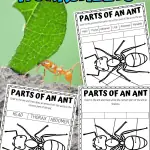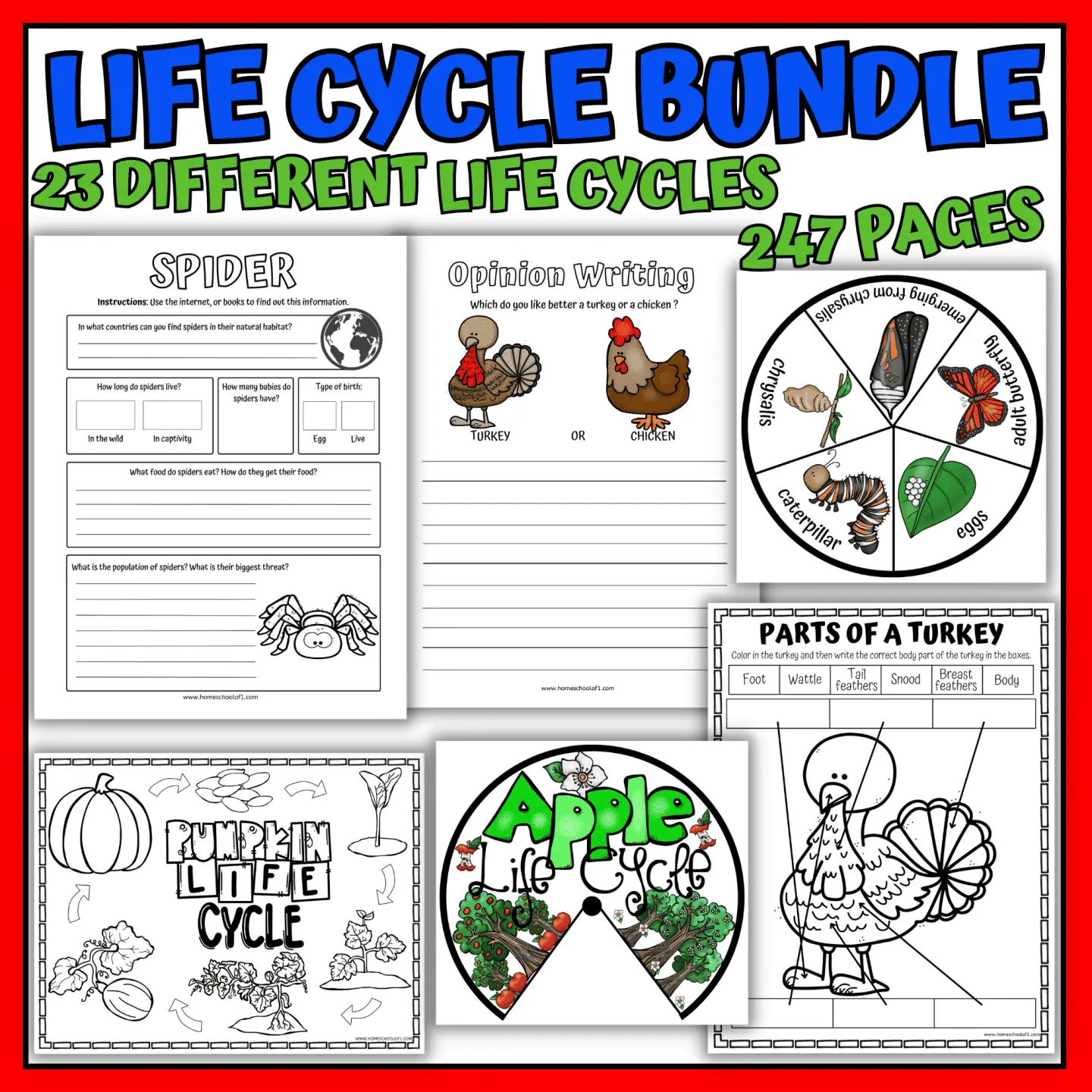Free Parts of an Ant Worksheet
Get ready for an adventure with our free parts of an ant worksheet.
We’ve got you covered with these science printable worksheets that introduce your little ones to the incredible world of ants.
Get ready for an exciting exploration of the six essential parts of an ant! This animal anatomy worksheet is all about discovering the head, thorax, abdomen, legs, antennae, and mandibles of these fascinating insects.
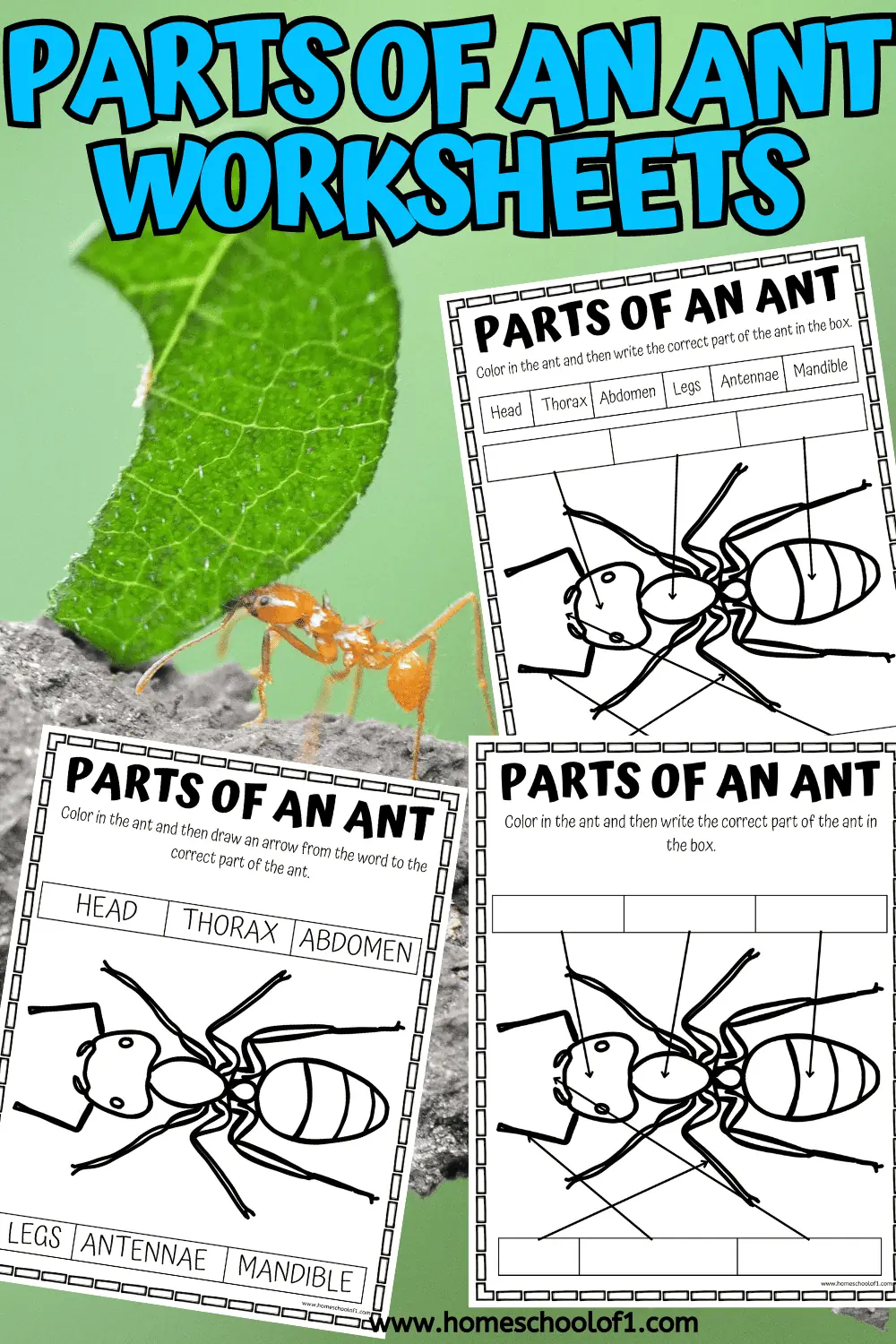
**This post may contain affiliate links. As an Amazon Associate and a participant in other affiliate programs, I earn a commission on qualifying purchases.**
You can choose from three different engaging activities: labeling the parts using a word bank, writing them without hints, or matching them to their correct locations.
On each of the 3 pages, the kids can enjoy coloring in the ant with whatever colors they choose.
So, let the adventure of learning and coloring ants begin! Get ready to uncover the wonders of their anatomy and unleash your artistic side.
What is the anatomy of an ant?
Get ready to crawl along as we delve into the fascinating body parts that contribute to their amazing abilities and distinctive features.
From their segmented bodies to their incredible antennae, ants are truly captivating creatures.
So, let’s scurry right in and discover the various parts that make up an ant!
Head
The head of an ant is like its control center, housing important sensory organs such as compound eyes, which provide excellent vision, and antennae that help them navigate their surroundings.
The ant’s mouthparts, including the mandibles, allow it to perform a multitude of tasks like gathering food, communicating, and defending the colony.
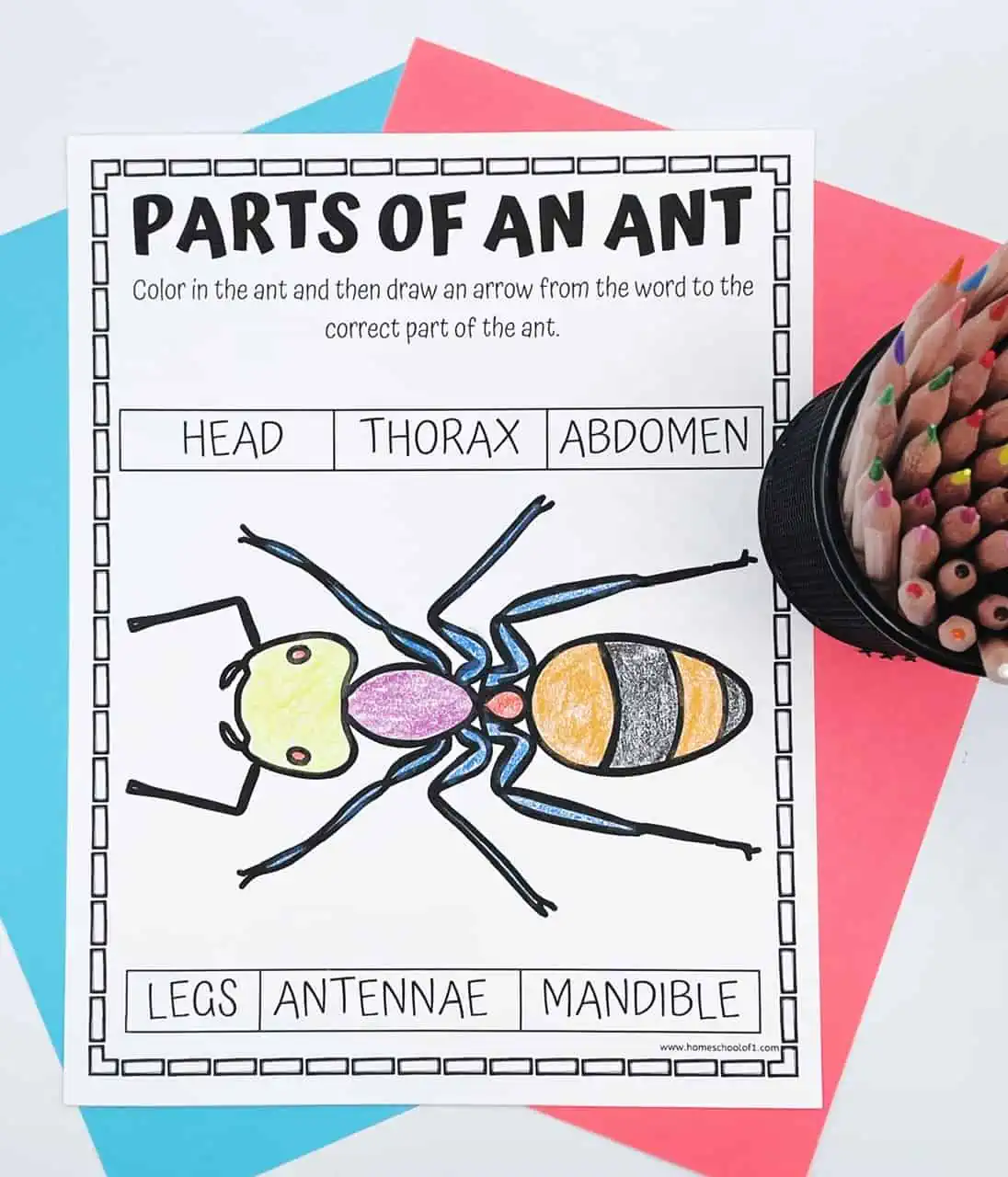
Thorax
Located between the head and the abdomen, the thorax is where the ant’s six legs are attached.
These legs are crucial for an ant’s day-to-day activities, enabling it to walk, run, climb, and carry objects.
The thorax also houses powerful muscles that allow ants to move quickly and efficiently, making them highly adept at exploring their environment.
Check out additional free ant activities for kindergarten!
Abdomen
The abdomen of an ant is its posterior body segment.
Inside this portion, you’ll find various organs responsible for storing food, water, and other vital resources.
Additionally, the abdomen plays a crucial role in reproduction, housing the ant’s reproductive organs. It’s also the part of an ant that differentiates between the various ant castes, such as workers, queens, and males.
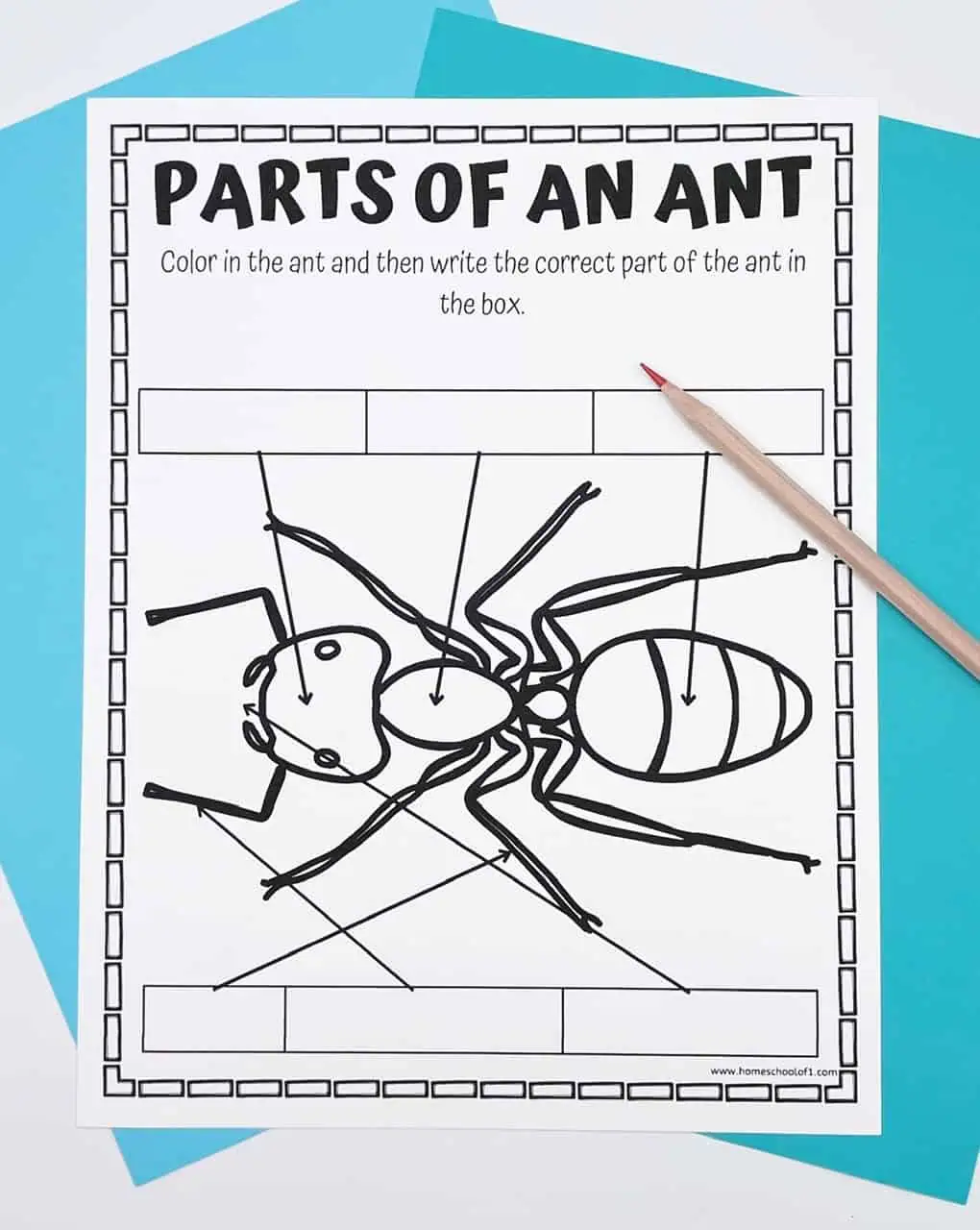
Legs
Ants possess six legs that are essential for their survival. These legs are not only responsible for movement but also provide ants with a range of additional functions.
For instance, ants use their legs to communicate with one another through touch and chemical signals, groom themselves and their nestmates, and even grasp objects or prey with impressive strength.
Antennae
The two flexible antennae protruding from an ant’s head are incredibly vital sensory organs.
They act as antennae do for any creature: they help ants detect chemicals, vibrations, and even perceive temperature and humidity changes.
These incredible structures play a crucial role in ant communication, allowing them to share information about food sources, danger, or even find their way back to the colony.
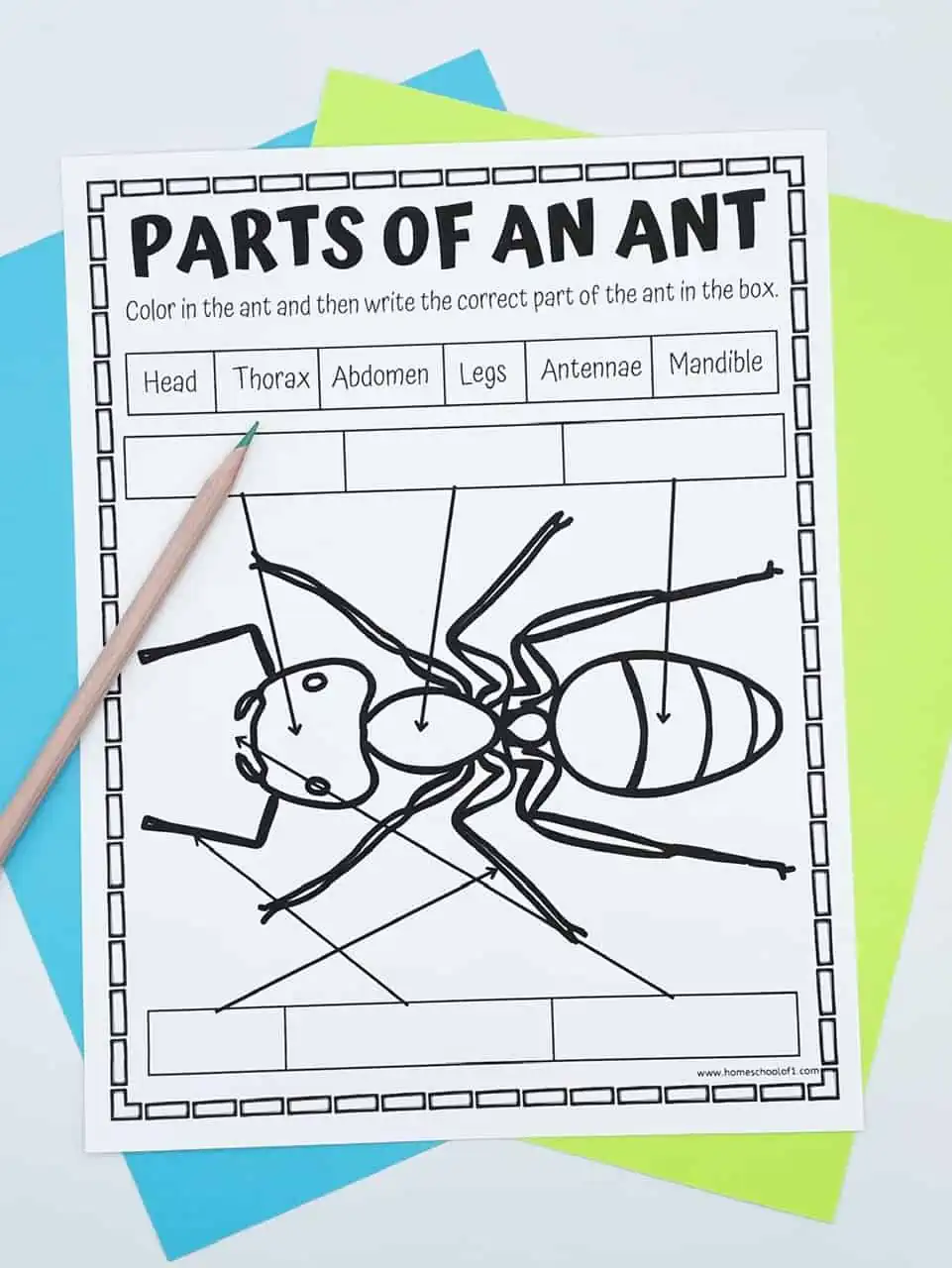
Mandibles
The mandibles, often called the ant’s jaws, are powerful structures on either side of their mouth.
They serve a variety of purposes, such as cutting and manipulating food, defending the colony from predators, and even excavating soil and building tunnels.
Ant mandibles are highly adaptable, and different ant species have unique shapes and sizes to suit their specific needs.
Learn even more about the tiny ant with our free ant life cycle printables.
Books about ants for kids
Continue learning about ants with these fun ant books for preschoolers:
Are You an Ant? takes young readers on a journey through the world of ants, providing an engaging and educational exploration of their behaviors and characteristics.
The Ants Go Marching? is a lively and rhythmic book that follows the adventure of marching ants, captivating young readers with its catchy song and vibrant illustrations.
Little Ant and the Butterfly tells the heartwarming story of a curious little ant who befriends a butterfly and embarks on an unexpected adventure, teaching valuable lessons about friendship, bravery, and embracing differences. With charming illustrations and an engaging narrative, this book is sure to captivate young readers and spark their imagination.
Need to print later? Add this to your Pinterest board or share it on Facebook. You’ll have it handy whenever you’re ready to use it!
Download the free ant body parts labeling worksheet
If you are running short on time you can download all of our life cycle worksheets. There are 247 pages over 23 different life cycles.
Ready to grab your free printable? Just pop your name and email into the form below, and it’s all yours!
Last Updated on 7 January 2025 by Clare Brown

